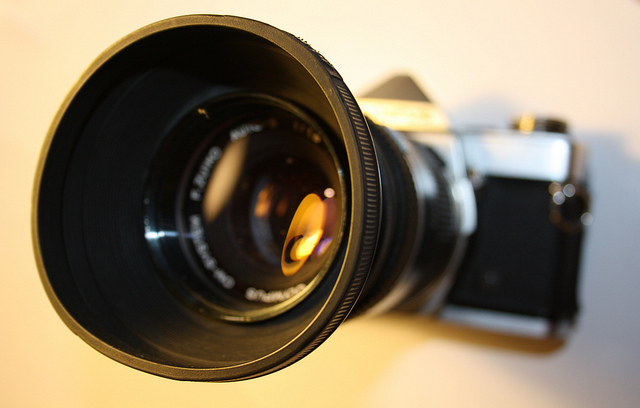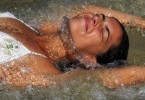Today, most mobile phones come with a camera so everyone snaps a picture or two. But if you’ve ever thought of pursuing a career in photography, there are umpteen opportunities available what with the tourism sector opening up and more and more journals, newspapers and magazines going online.
Apart from this you could also take pictures for advertising agencies or even pursue the art as a hobby. You could specialise in detective and crime photography, in portrait photography, in wildlife photography, in still life pictures…You could join an agency; a newspaper, a magazine, a tourist department or you could freelance. The options are endless. However remember that unlike other careers, photography is more or less an art form so to be really good at it you must have a flair for the medium and, yes, a certain passion. Apart from all the above qualities you need to be sensitive, aware of compositions, be ready to take a brief, be inventive and, above all, have an eye for detail. You must also have the ability to work well with others as you may have to deal with clients, graphic designers and so on.
If you feel you have all these qualities then here’s the dope! What would be of great help is to talk to a few professional photographers to learn about their career backgrounds, what they did to establish themselves in the profession and so on. You could also subscribe to newsletters and magazines that give you photographic news so that you are in the know of the latest techniques and other details. With all that out of the way, you need to gain knowledge about the necessary equipment, about cameras and lenses as well as about the various types of film qualities available. You must also be aware of what film to shoot what with. You would also need to know various computer software programmes and applications that would allow you to edit images. Then there is the question of props, the setting of the shot and a hundred other tiny details.
If you have not already taken a course in the subject then get set to spend a bit of money – which will pay you dividends in the long run – and take the plunge. Enrol in a good course that will teach you the basics as well as about camera types and their operations; the science of optics; composing, framing etc. You would also need to learn about how to shoot outdoors as well as indoors as they are two completely different mediums and the lighting will be different. The course, thus, should cover everything from shooting pictures for news, for architectural and industrial images, for portraits, for fashion as well as for food.
Once you have all this covered you could keep adding on to what you know depending on which area of photography grabs your interest. For instance, a short programme in creative photography will help you learn about the techniques of lighting and how to operate a camera with a lens or a flash. It will also cover areas such as lighting ratios etc.
It is always good to have some specialisation whether you use it or not. There may not be such a huge demand for portrait photography – which you may want to specialise in – but at least it will be a skill set in your armoury that will come in handy.
Portrait photography is also very different to commercial or industrial, wildlife or even travel photography. To take a good portrait you have to choose the clothing, setting and props with great care. Since you are shooting a live form, your subject has to be relaxed and comfortable. Small talk must, therefore, come to you naturally! A lot of photographers into this genre of the art form work on calendars, take pictures of stars and build portfolios of models.
News photographers on the other hand have to understand the story behind the event so that their pictures match the story. They also have to recognise a potentially good picture and be quick to capture the image.
A specialisation that is gaining in popularity today is wedding. Most people want their wedding pictures to stand apart and be more special from the others; this means that you will have to constantly reinvent your shots. Of course, the money here could be good depending on what you would provide.
These are just a few examples of how different the various forms of photography can be – so choose your specialisation with care. Once you are armed with knowledge about the subject, you could work under the guidance of a well known professional before you actually launch forth on your own. This should work well if you want to freelance. A word of caution. It would be good to develop your own style of photography in order to stand out from the competition. Some photographers enter the arena by sending unsolicited pictures to magazines or art directors at advertising agencies. But what matters most, if you are taking this route, is your portfolio which must be excellent.
If you are someone who likes to be assured of a pay cheque coming in every month then look for other job options like work in book publishing houses, magazines or newspapers, food product industries, food stylists, advertising agencies and so on.
Photographs have the potential to earn well and it goes without saying that as you climb the ladder and make a name for yourself, the pay cheques get larger.
The downside of the profession is that you may have to work long, and often, irregular hours. You may also have to travel at short notice and you may not be able to plan something for yourself in advance – at least initially. If you are into commercial or travel photography, you could be at locations that do not provide you with five star comfort!
However, at the end of the day, photography is a very satisfying profession. So, if you’ve got what it takes – go for it!
Fast Facts
It is important for people in this career to be able to:
• Observe the details of objects that are either close by or far away.
• See the differences between colours.
• Determine the distance between objects.
• See objects in either very low or very bright light.
• Hold the arm and hand in one position for long intervals
• Make fast repeated movements.
• React quickly.
• Adjust the equipment controls to keep pace with the changes in speed of moving objects
Quick Tips and Tricks
Here are three quickies that could help you get that perfect shot:
The first: Always identify your main focal point so that you can work out whether you are going to use secondary points of focus or just work with your main subject so that the attention is focused on them.
The second: Consider how close you are to the subject. If it is too far away, the image could lose its importance. On the other hand, if you are trying to create a sense of scale you may want to move the person or subject further into the frame. Think about whether you want to fill the frame or not.
The third: The angle of the light and its strength will change the look of your picture. If you are shooting in dark conditions, for example, and you don’t want to use the flash you may consider turning up your camera’s ISO.
Visual Courtesy: http://www.flickr.com/photos/potzuyoko/







